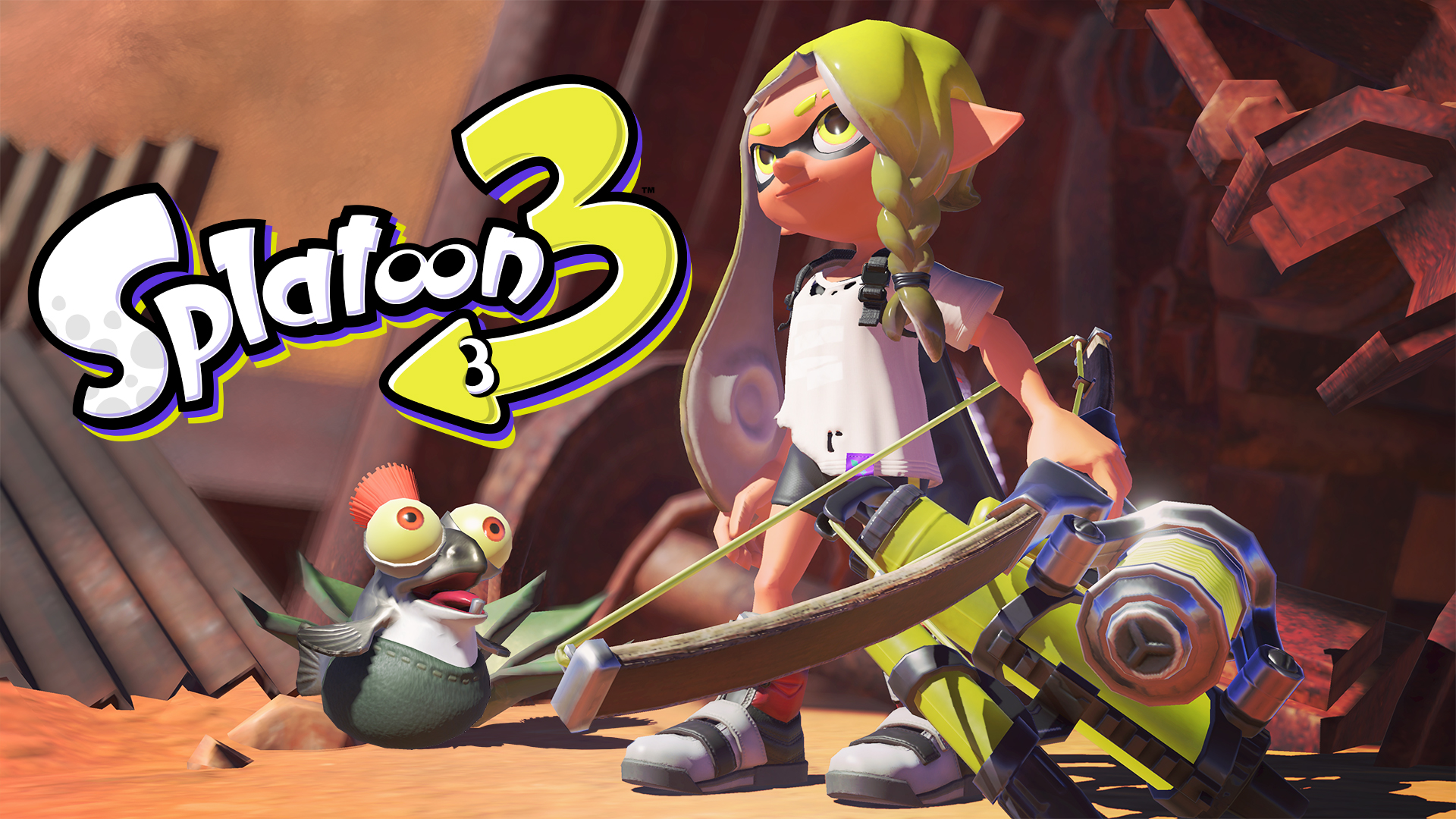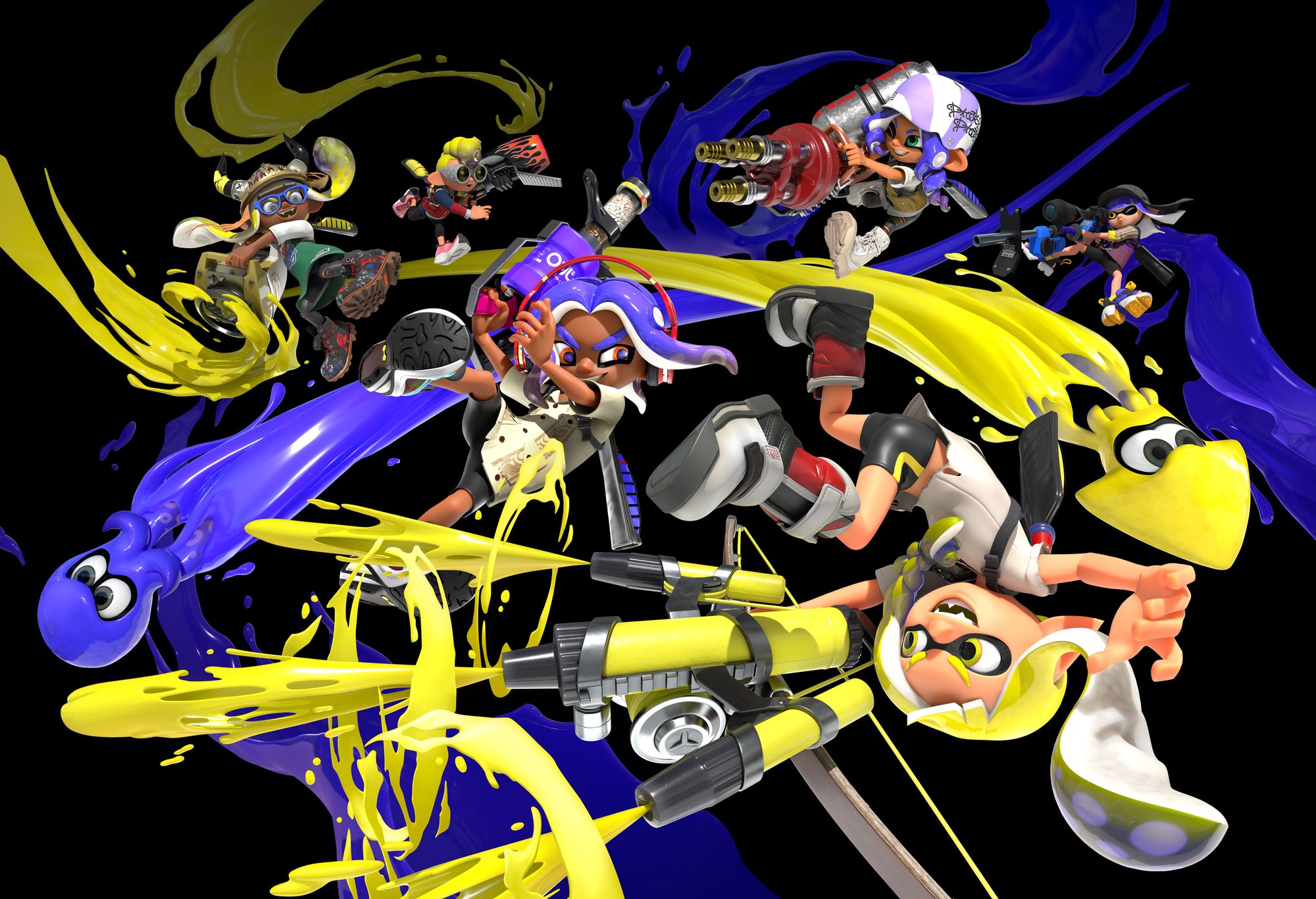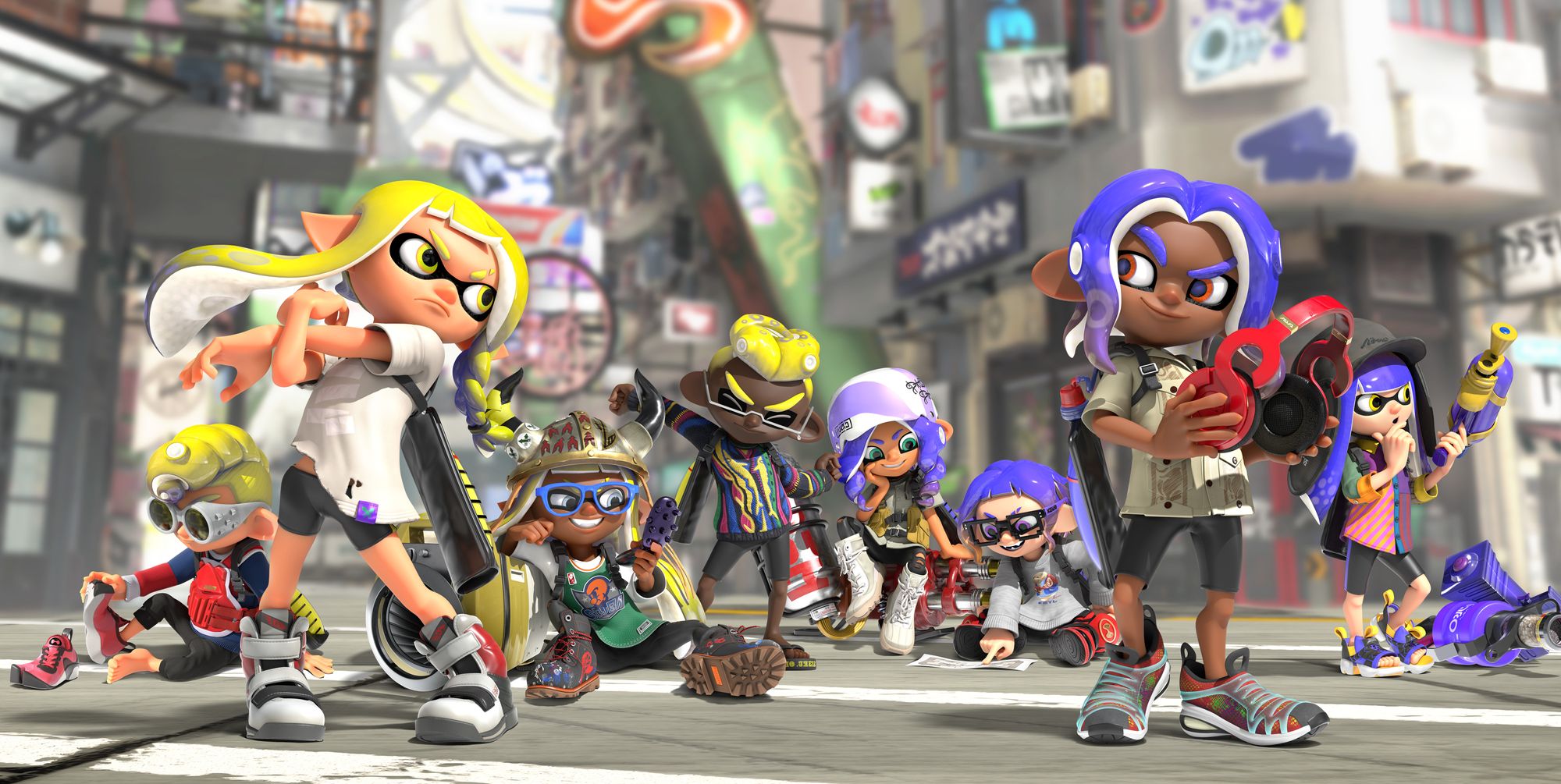Splatoon 3 Review
Sometimes, a fresh coat of ink is all you need

When you first launch Splatoon 3 - and after being greeted by the snazzy new pair of DJ announcers - you're probably going to want to run up the stairs and into the multiplayer plaza, or perhaps consider how the game gently nudges you to try the new single-player campaign, pointing to a familiar old cook peeping out from the sewers. I did neither of those things as my first course of action. Instead, I took my time to appreciate how the collective zeitgeist, of the Splatoon lore and fanbase, all came together in Splatsville.
But I'm getting ahead of myself; let's take it back a notch and start from 2017.
Inktastic
Splatoon 2 launched back in 2017 and was part of the impressive first-year lineup for the Nintendo Switch. Given the consistent popularity of the title with no signs of the fanbase losing interest, many were okay with the notion of an inevitable sequel launching alongside the next (also inevitable) Nintendo console, whatever and whenever that may be. Instead, Splatoon 3 launches within the same hardware generation as its immediate predecessor, and at the time of writing, there are currently no plans to shut down the servers of Splatoon 2, although new updates and Splatfests will no longer be rolled out for it. Still, the point is fans aren't being forced to migrate to the new game just yet.
Diehard fans didn't need much convincing here, as at the time of writing the latest in this ink-blasting franchise has reached nearly four million units since launch, a number that's still rapidly climbing. Clearly, people were keen for a new title.

The first Splatfest for Splatoon 3 was met with an enthused response, mainly because fans got to experience the slightly uneven, but still ridiculously fun, three-way team battles. Why have two teams paint the town red (or whatever colour gets assigned!) when you can have three teams mixing it up? Of course, there are plenty of new toys to play with too - including an ink katana of all things - but then, some of us can't help but stick with our trusty ol' Splattershot.
In essence, the core multiplayer splat experience has not changed too much, aside from having new maps and new gadgets to try out, not to mention some fantastic new music to expand an already impressive soundtrack. The sense of urgency to paint as much as possible in three minutes remains unchanged from 2015, and honestly, there is no real reason to reinvent the wheel here.
The new maps are great, too. There's even more emphasis on multiple elevations, strategic choke points, and handy map-specific gimmicks that clever teams can exploit to gain the advantage.
The biggest single new addition to multiplayer is the new Tri-Colour mode, which enables up to three separate teams to compete against each other. This hectic new mode isn't available all the time though; it surfaces alongside Splatfests (periodic events where players are asked to align with a "side" - usually something silly like "ketchup or mayonnaise" - and then compete over multiple days against teams on the opposing side to determine an overall winner).
Splatsville, single player, and Salmon Run
In the past, the single-player components of Splatoon felt like afterthoughts, often resembling a souped-up training mode, although the boss battles were always excellent. Things really were really turned up a notch by the second game, including a hefty DLC pack that supplemented the campaign and lore. With the latest game, the single player initially starts out in typical tutorial fashion before things turn epic in a hurry. Within the first hour it's clear how this is the best the single-player mode has ever been, and so if you happen to be a little unlucky right now with connectivity issues in multiplayer, then the new storyline and epic boss battles will have you covered. Not to mention, your new sidekick (a little critter whose hairstyle you can change!) plays a big role in the level design, as well as exploiting creative weak spots of the bosses.
The various modes in Splatoon 3 are, like in previous entries, connected together via an expansive hub world. In previous games, the hub worlds - never short on style or personality - felt relatively modest in terms of size and scope. This time around, the new hub world (known as Splatsville), feels like a living and bustling city filled with more anthropomorphic aquatic denizens than ever before. It's worth taking the time to explore your surroundings regularly, as some modes (and sub-modes) progressively unlock as you level up. The meatier content is gated by the requirement to reach at least level 10, which shouldn't take you too long (even if you struggle with the connectivity issues - more on that in a moment).
Aside from uncovering new modes, Splatsville itself is worthy of exploration thanks to its stunningly cohesive art and sound design. Splatoon 3 is the boldest and most ambitious iteration of the design language Nintendo created for this franchise; it's easy to argue that Splatoon has rapidly become Nintendo's most compelling modern IP. As in previous games, you'll see graffiti everywhere in town - graffiti created by real players. In fact, customisation is more heavily emphasised here than ever before, thanks both to the liberal placement of player artwork, as well as the deeper and richer gear customisation options that are now available.
Then there's Salmon Run; one of the major modes first introduced in Splatoon 2, and it's featured in the new game with the added subtitle of Next Wave. Once again, you're working for a big mean corporation called Grizzco - one might be tempted to question their workplace safety protocols (and have the squids even unionized?). Well, at least there are information seminars.
The mode offers a compelling alternative to the usual multiplayer shenanigans, as players (local or online) team up to hunt down some pesky Salmonoids in unique stages. While they're probably not safe to consume as sashimi, Grizzco are really after their eggs, namely Golden Eggs and Power Eggs, and you want to hurry too before a Snatcher shows up. Salmon Run is primarily about the hunt and feels a lot different from the typical Splatoon affair. The experience itself is largely similar to how it was first introduced in Splatoon 2, aside from being able to loan new types of weapons and gear.

Two steps forward, one step back
Iteration is definitely the name of the game with Splatoon 3. Nintendo has polished up the multiplayer modes to a fine sheen, and dramatically expanded the scope and depth of the single-player game. They have also introduced some key quality of life improvements, including the ability to "listen to" (rather than be forced to watch) the opening announcements from the new in-game host trio called Deep Cut. It's also possible to tap the L and R shoulder buttons to immediately page between the various in-game stores, without needing to go back to the main menu or physically walk to them in Splatsville.
These improvements may seem small - and in a sense, they are - but they are all in service to the idea of making the "busywork" smoother, leaner, and getting players back into battles as quickly as possible. Speaking of which...
Connectivity is a major issue post-launch. This is somewhat surprising given Nintendo's pre-launch network test as well as their experience with matchmaking across the previous two Splatoon games. While each player's experience may vary, it's regularly the case that your matchmaking connection will completely drop out more often than not. It was routine for matchmaking to fail maybe on every 6 or 7 out of every 10 attempts for us. Not only is this frustrating, but every time the connection fails, the game re-connects to the internet, and matchmaking starts all over again from the beginning.
Presumably, Nintendo will improve the connectivity issues over time, but what we're describing here is the current state of the experience, should you decide to dive in now. If you're patient, it's not necessarily a deal breaker. But we truly don't know if or when the connectivity problems will be resolved, and we can't review the game based on an imaginary future state - we have to discuss how it works right now based on our experience. It's worth keeping this caveat in mind if you choose to jump in now.
Conclusion
Nintendo could almost have gotten away with turning Splatoon into a franchise with annual updates. But five years - and lots of splatfests - seem to have enabled the developers to simultaneously lean into the best bits and slice away the pieces that get in the way of the fun.
Some may argue that Splatoon 3 is "more of the same", and while that may be largely true, it's hard to fault this approach given Splatoon's solid core ingredients, which remain as addictive and delightful as ever.
The more things change the more they stay the same, and in the case of Splatoon, that's exactly how it should be. Too bad Sheldon still talks way too much.
